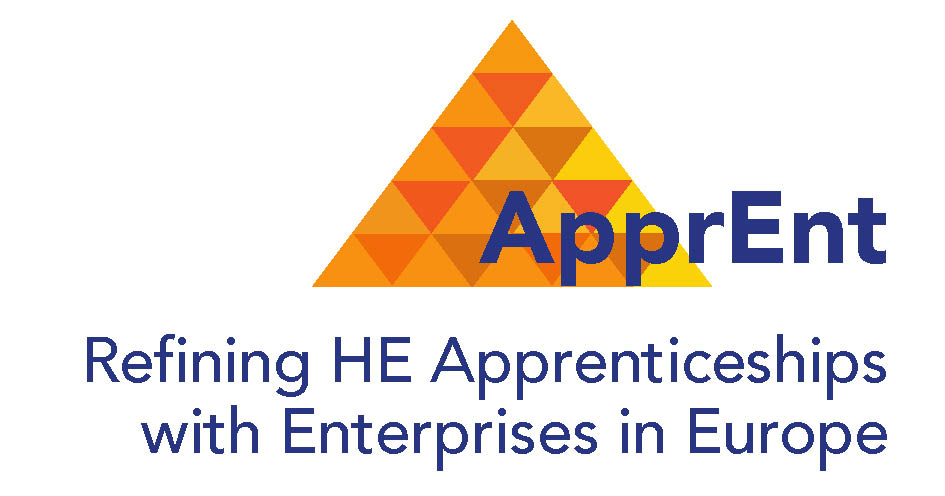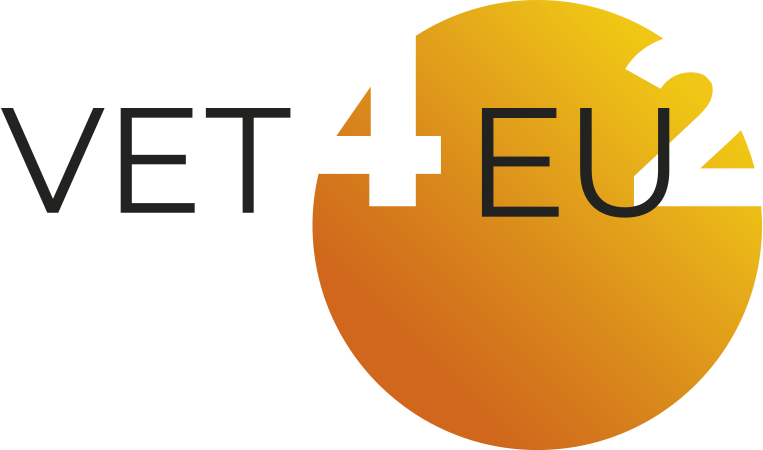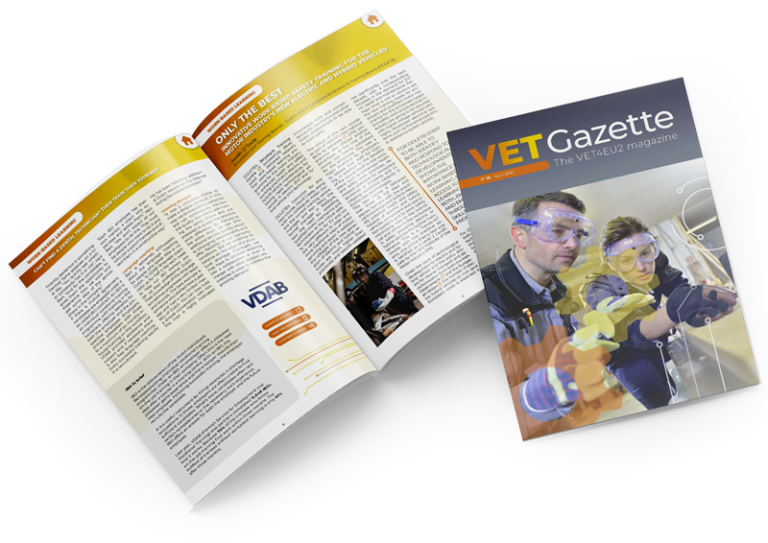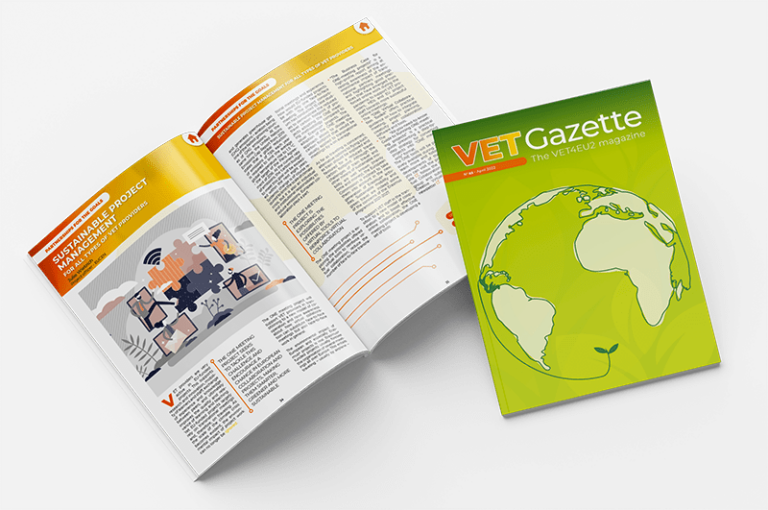ApprEnt is a project funded by the Erasmus+ programme aiming to address two key challenges of today’s education and training in Europe: high unemployment among young people and the shortage of higher-level skills required by employers. To respond to these issues ApprEnt fostered cooperation between higher education institutions (HEIs) and business and promoted the establishment and improvement of work-based learning (WBL), especially apprenticeship schemes.
Higher education apprenticeships (HEAs) – and work-based learning schemes in general – are seen as a way to help learners gain a recognised professional qualification while developing experience in a real work environment, therefore increasing their future employability at a level appropriate to their knowledge and competences. For HEIs, apprenticeships mean improving the professional dimension and relevance of the curricula and teaching methods, accelerating exchanges with the business world and allowing an honest transition of students from education to work. For enterprises, HEAs can represent a way to attract more highly skilled people and bring about a smoother recruitment process.
ApprEnt has involved a mixed consortium of higher education institutions and Chambers of Commerce / Associations of SMEs in seven different countries with the aim of fostering the sharing of good practices and maximising peer-learning, transnationally in partner meetings but also in each partner country team, where focus learning groups of education institutions and business organisations have worked together with representatives of public authorities and learners contributing to the discussion.
The ApprEnt consortium understood “HE Apprenticeship” as programmes that have all or a minimum of four characteristics out of the six listed below:
- Learning alternates between the workplace and an education centre
- Mentoring is a strong aspect preserved by the employer and the HEI
- The programme is part of a formal or continuing education training
- Successful learners receive a recognised certificate
- The training involves signing a contract or formal agreement by the student
- The apprentices receive remuneration in the form of wage or salary
The resources and tools1 produced by ApprEnt include national reports describing the HE apprenticeship system in the partner countries, feedback collected through formal and informal exchanges organised at national level, 33 case studies of existing HEA practices including their transversal comparison, and a prototype training course for mentors and supervisors of HEA programmes.
When it comes to HEA, it is first and foremost important to consider that different scenarios exist in different countries and contexts: in some countries institutions have consulted key stakeholders and civil society and linked the strategy with existing initiatives; in other countries institutions do have basic strategies, but they are currently not linked with HE and SME collaboration; in some other countries, working groups or projects have been established in order to implement this collaboration; finally, there are examples of countries where apprenticeship in HE is in as yet only in pilot phase.
ApprEnt POLICY RECOMMENDATIONS
The ApprEnt Policy Recommendations are based on the belief that HEAs are of vital importance to bridge and strengthen University-Business collaboration
The ApprEnt Policy Recommendations are based on the belief that HEAs are of vital importance to bridge and strengthen University-Business collaboration and respond to needs and challenges experienced by policy-makers at European and national level, higher education institutions, enterprises and learners.
The policy recommendations focus on four different target groups: EU policy makers, national policy-makers, higher education institutions and enterprises. They illustrate the action that each actor should take to improve HEAs in the specific area addressed.
1. Regulations
To establish a clear definition and transnational understanding of higher education apprenticeships, clarifying what distinguishes them from other schemes, such as internships and traineeships. This should cover quality issues and expected outcomes.
2. Strategic policy-making
To make HEAs part of an overall strategic goal to integrate work-based and vocationally oriented learning within academic learning / general education.
3. Training
To ensure that mentors2 in companies and HEIs have the pedagogical skills and competences needed to guide and support students, and that they are provided proper training. This will guarantee quality higher education apprenticeships.
4. Mobility
To support mobility schemes academics and non-academics involved in HEA schemes at regional, national or international level. Institutions and enterprises should be encouraged to welcome and support visitors as well as to promote mobility amongst their own staff.
5. Guidance, coordination and assessment
To create permanent ‘orientation and guidance’ spaces (both online and face-to-face), linking enterprises, HEIs, mentors and students, in order to provide information about HE apprenticeship schemes and ensure smoother administrative processes. Suitable assessment methods and tools should be in place to monitor the learning achieved.
6. Quality Assurance
To ensure quality placements where apprentices learn and are prepared for their future working life. Appropriate quality criteria should be designed involving the needs of both sides – HEIs and SMEs. This is a responsibility of all the actors involved in HEA schemes.
7. Allocate resources
To promote work-based learning (WBL) and apprenticeship positions for young undergraduates and graduates. This will imply making more resources available to support them, at EU and national policy-making level as well as at HEIs level.
8. Funding companies
To allocate enough European and national funding and support in every country to implement the European regulations for apprenticeship programmes.
9. Transparency
To ensure transparency from the relevant actors to monitor, compare and share implemented actions, including the expenditure required for the implementation of HE apprenticeship schemes, pedagogical methodologies, learning outcomes and assessment criteria.
10. Sustainability
To embrace sustainability of the whole system. Two different levels of sustainability have to be borne in mind: regulatory and applied. This means continued support of the training of trainers and legislating, regulating and implementing measures to ensure that short-term actions can take place.
1 All tools and resources are available for free on the project website: https://apprent.eucen.eu/tools/
2 Mentors (from SMEs and industry) and supervisors (from HEIs) are both called “mentors” in this document, as a global concept. It is very important to understand that we refer to both individuals.









Responses